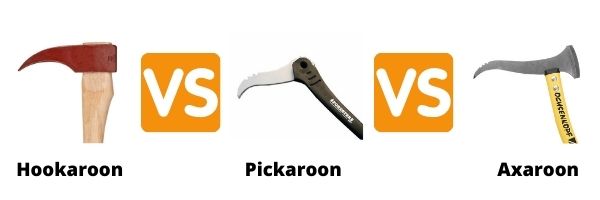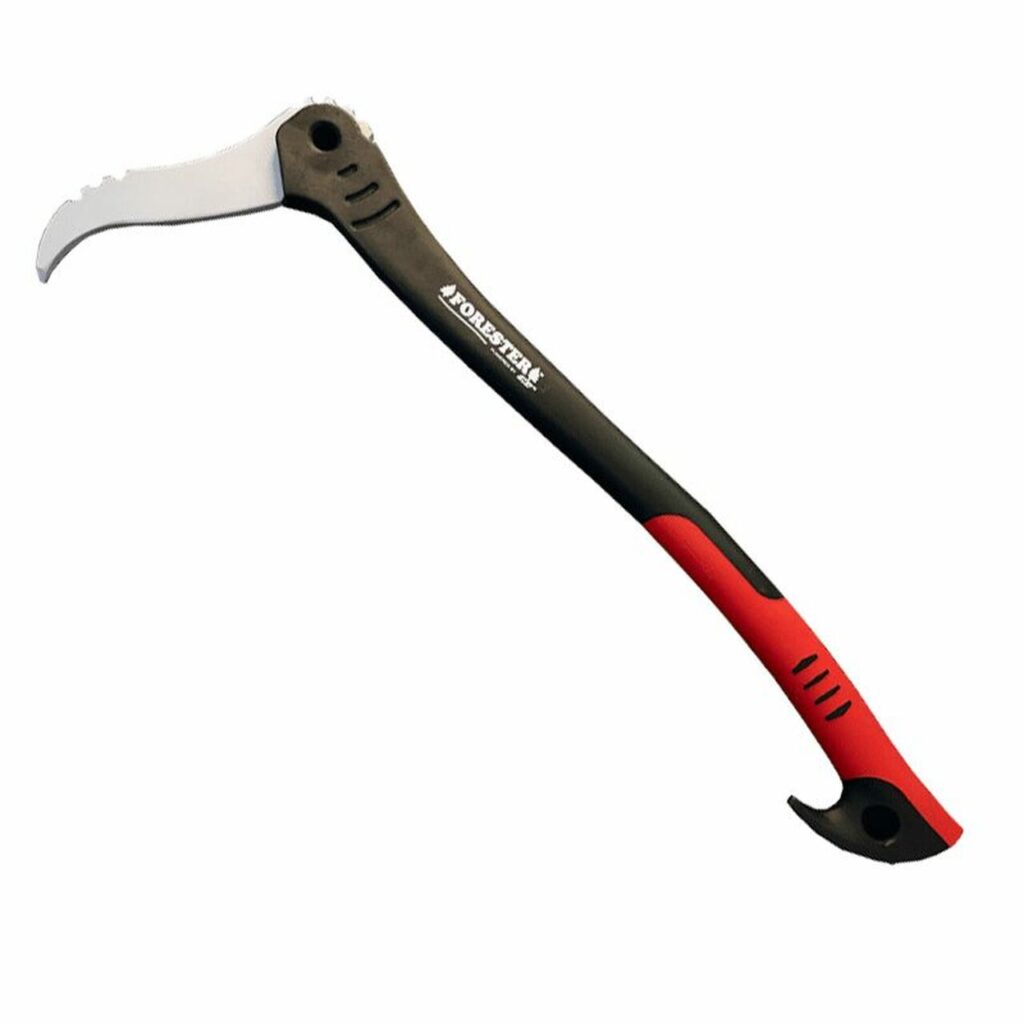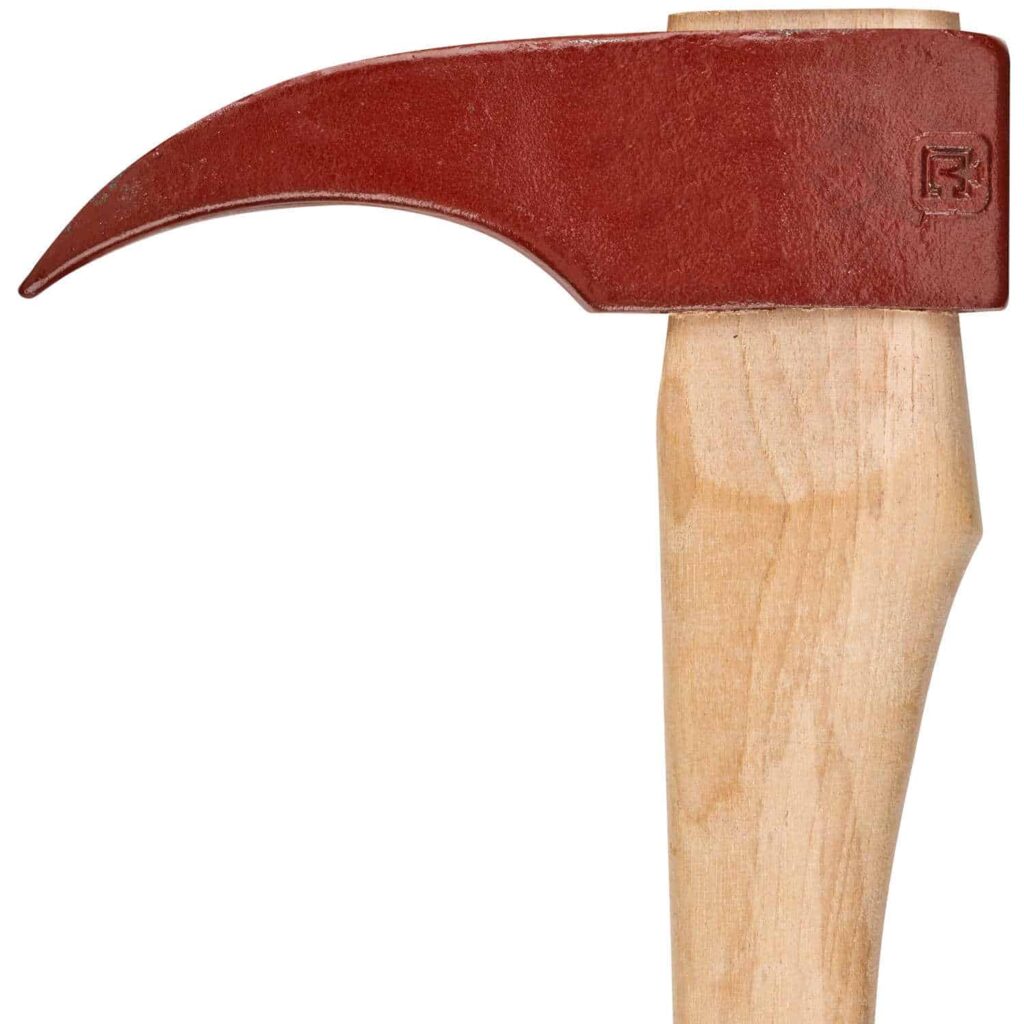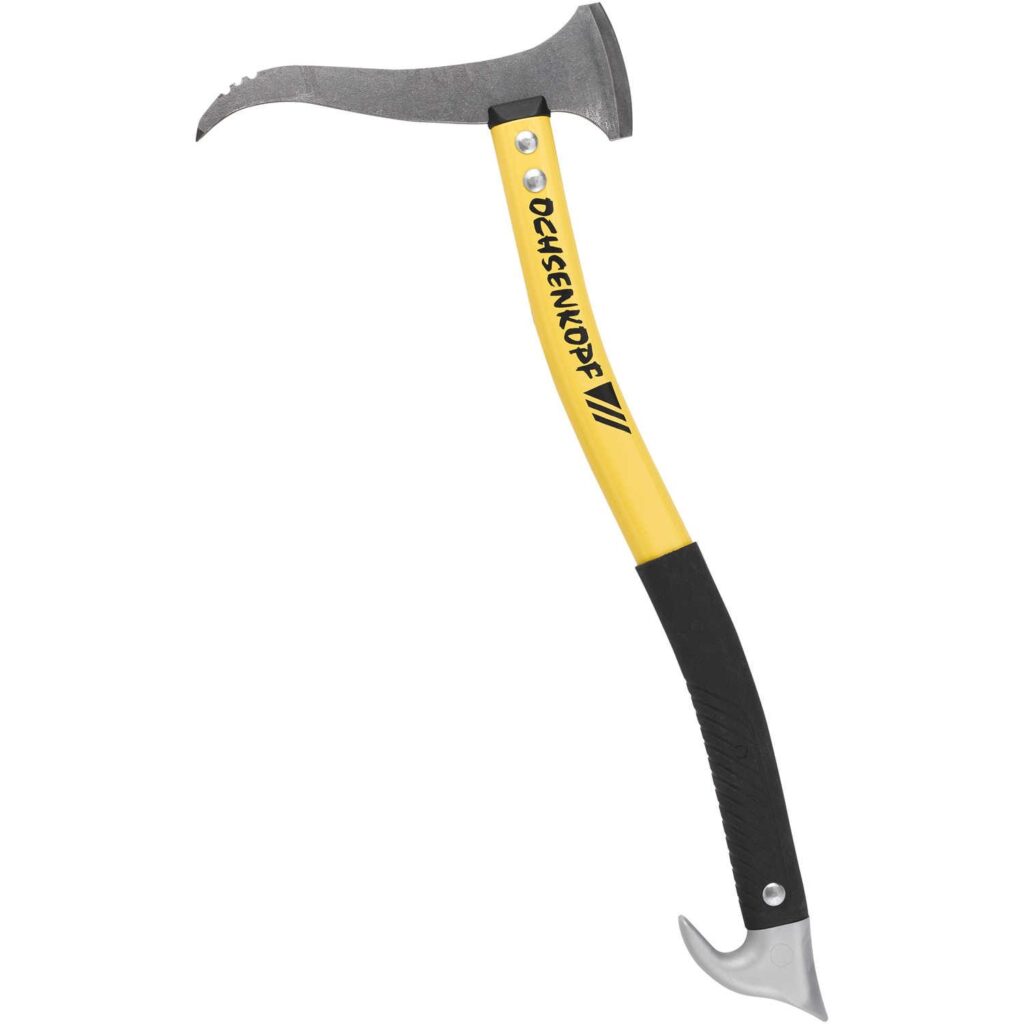A pickaroon is a lumber tool with a hooked steel head used to lift and move timber around, compared to a hookaroon with a downwards curved head that can rearrange heavier stacked lumber.
If you are experienced in the lumber industry, you will have used or at least heard of a pickaroon. They are a handy tool for moving wood around without bending down or using your hands.
You might also have heard of a hookaroon – or maybe even an axaroon? Or a sappie?
For the uninitiated, many lumber tools can look the same but have different purposes.
There are lots of names for these variations of a pickaroon, so let’s figure out exactly what the differences are and which one suits your needs. In this article, I will explore a pickaroon vs. hookaroon vs. axaroon.

| Tool | Pickaroon | Hookaroon | Axaroon |
| Design | Hooked Steel Head | Downward Curve Head | Axe Blade on the Back |
| Purpose | Pickup and Rearrange Lighter Stack Lumber | Lifting and Rearranging Heavier Stack Lumber | Additional Purpose of Limbing Branches |
Table of Contents
What is a Pickaroon?
A pickaroon is a lumber tool used to move wood around without bending down too often.
A pickaroon comprises an axe handle with a hooked steelhead. They primarily used to pick up, rearrange, and stack lumber. The spike digs into the wood to pick it up more easily.
There are variations in the length, shape, and angle of a pickaroon’s spike. The less slope the spike has, the more easily the wood can fall off.
Pickaroon’s are best suited for lifting, dragging, stacking, or rearranging smaller pieces of wood.

Pros
- The pickaroon is more versatile and I especially like the composite handle designs that reduce the weight. You are already lifting heavy wood and don’t want to have to lift a heavy tool as well.
Cons
- The smaller hook on the tool head can allow wood to slip off which can be dangerous depending on the size of the lumber you are moving.
What is a Hookaroon?
The main difference between a pickaroon and a hookaroon is the shape of the head. A hookaroon’s head has a more pronounced downwards angled spike. This makes it more difficult for the wood to slip off.
A hookaroon is also used for lifting, rearranging, and stacking wood. Hookaroon’s are better suited for heavier pieces of wood than a pickaroon.
One of the issues with a hookaroon is that the spike can get jammed in the wood and is difficult to remove. This is controlled by adjusting the amount of force, which can only be learned through experience.

Pros
- The hookaroon is better for lifting heavier wood because of its more heavy-duty head.
Cons
- I have noticed that the hookaroon is often heavier which can be painful after a full day of use.
What is an Axaroon?
An axaroon is a variant of a pickaroon with an axe blade attached to the back side of the head. This allows the lumber worker to cut off small branches and clean up their wood without carrying a second tool.
Carrying one tool instead of two is very useful for any timber worker.
The axe blade is generally on the small side, not like a felling or splitting axe, so it is not suitable for cutting up firewood on its own. It is primarily just for trimming small branches or removing bark.

Pros
- The additional tool of the axe can be useful but only for very specific purposes and for wood that has small enough branches that this small axe blade can actually help.
Cons
- I find an axaroon is a poor cousin to both a hookaroon and an axe. The axe is too small to be of much use and makes the hook less maneuverable.
How to Use a Pickaroon?
A pickaroon, or any variant, is very easy to use. You swing it like an axe and bury the spike into the wood. You can then carry or drag the wood easily to rearrange or stack. The easiest way to remove the spike from the wood is to place your foot against it to provide some leverage to pry it free.
The handles are generally replicas of an axe handle and can be made from wood, fiberglass, steel, or a lightweight composite.
Make sure you select a tool that has a rust-free head material. Your pickaroon will get covered in moisture from the wood as well as sap. The head can rust quickly if this isn’t cleared before storage. So ensure you clean your pickaroon head thoroughly or pick a rust-free material.
My only other comment is regarding safety. The spike on a pickaroon can be sharp, but generally, most users treat it with less respect than an axe. You will still be swinging this sharp implement very close to your legs and feet. The pickaroon can bounce off the wood if it strikes a knot in the wood. Always pay close attention to your actions when using a heavy, sharp tool.
